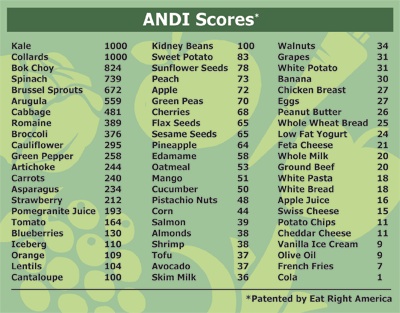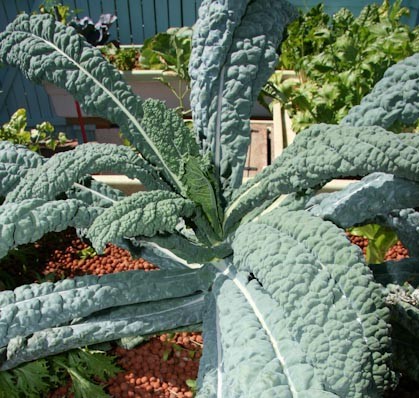Aquaponics: The Power of Kale
Australian Television gardening guru Peter Cundall was well into his eighties when he was once asked why he looked so fit and healthy?
His answer was, “The last time I went to a doctor because I was sick was in 1951.”
“The reason why I’m so healthy is because I actually do a lot of hard, physical work in the garden, and I also eat the food that I grow myself, but there’s one particular thing that I grow that is extraordinarily good for you. It’s called kale!”
What is Kale?
Kale is a form of cabbage of the Brassica family. Its loaded with nutrients. Its a superstar in the vegetable kingdom.
Kale is very high in beta carotene, vitamin K, vitamin C, lutein, zeaxanthin, and reasonably rich in calcium. Kale, as with broccoli and other brassicas, contains sulforaphane (particularly when chopped or minced), a chemical with potent anti-cancer properties.
According to recent research results, kale is an incredible source of well-absorbed calcium, which is one of the many factors that may help prevent osteoporosis.
It also provides decent amounts of vitamin C, folic acid manganese, and potassium.
Health Properties
Antioxidants
An antioxidant is a molecule that inhibits the oxidation of other molecules. Oxidation is a chemical reaction that transfers electrons or hydrogen from a substance to an oxidizing agent. Oxidation reactions can produce free radicals. In turn, these radicals can start chain reactions. When the chain reaction occurs in a cell, it can cause damage or death to the cell.
Kale excels in the arena of carotenoids and flavonoids, two powerful antioxidants that protect our cells from free radicals that cause oxidative stress. Flavonoids have also been shown to specifically fight against the formation of cancerous cells.
Anti-Inflammatory
One cup of kale provides about 10% of the RDA of omega-3 fatty acids that helps regulate the body’s inflammatory process. A megadose of vitamin K further aids to fight against excessive inflammatory-related problems, such as arthritis, autoimmune disorders, and asthma.
Cancer
Kale’s remarkable antioxidant and anti-inflammatory powers are said to fight against cancer, A healthy diet of kale also provides glucosinolates, which have been shown to prevent colon, breast, bladder, prostate, ovarian cancers, as well as gastric cancer.
Cardiovascular Support
Because of it’s high fiber content, kale is said to lower our cholesterol by binding with bile acids that the liver produces, ultimately lowering the amount of cholesterol within our bodies.
Detox
The isothiocyanates (ITC) from glucosinolates found in kale aid in both phases I and II of the body’s detoxification process. The high sulfur content of kale has further been shown essential for phase II of detoxification.
Vitamin K
Kale is said to release large doses of vitamin K that strengthens the composition of our bones. Vitamin K also prevents calcium build-up in our tissue that can lead to atherosclerosis, cardiovascular disease and stroke.
Vitamin A
One cup of kale is an effective antioxidant, boosts immunity, maintains healthy bones and teeth, prevents urinary stones, and is essential to our reproductive organs.
Vitamin C
Vitamin C, which one cup of kale heartily provides (over 88% of our RDA), is not only a powerful antioxidant, but also lowers blood pressure, ensures a healthy immune system, and fights against age-related ocular diseases, such as cataracts and macular degeneration.
Kale in Aquaponics
Kale loves Aquaponics. We’ve noticed over the years that Kale just takes off in Aquaponics gravel media bed systems. It vigorously leaps out of the bed if the growing conditions are right. We live in a sub-tropical environment with lots of sunshine. We don’t have a greenhouse or any type of grow-lights. So environmental conditions are partly responsible for our success but thats not the entire story. Kale used to be grown throughout Europe it was considered the poor man’s cabbage so it will grow successfully in temperate climates.
Kale prefers cooler temperatures (60-70°F, 15-21°C) so we tend to grow it over our winter period. Soil gardeners report that dry conditions will affect its quality and can encourage bolting. In aquaponics, because of the constant flood and drain cycle it grows happily without problems. It tolerates partial shade and, if you do live in a hotter climate, you may like to try it in shadier spots.
There are many types of Kale so do some research in your local area to find out what type grows best.
Physician and Nutritionist Dr Joel Fuhrman developed a index of micronutrient scores called the Nutrient Density Index, which ranks categories of foods based on their ratio of nutrients to calories. His Aggregate Nutrient Density Index places Kale along with Collards, Water Cress and Bok Choy at the top of the list of plants you should eat.
Surprisingly, all these top plants grow exceptionally well in Aquaponics.
“Nutritional science in the last twenty years has demonstrated that colorful plant foods contain a huge assortment of protective compounds most of which still remain unnamed.” says Dr Fuhrman, ” Only by eating an assortment of nutrient-rich natural foods can we access these protective compounds and prevent the common diseases that afflict Americans.”
[sws_green_box box_size=”700″]
Aggregate Nutrient Density Index (ANDI) is a score assigned to whole foods that contain the highest nutrients per calorie as Dr. Joel Fuhrman describes in his book, Eat For Health. Each of these whole foods is given a score based on the equation H=N/C, which is that the health of a food is equal to the nutrients it delivers per calorie. Each ANDI score is based on a possible score of 1,000-0, with 1,000 being the most nutrient dense and 0 being the least nutrient dense. Kale, Mustard greens, Collard Greens, and Watercress all receive a score of 1,000 using the H=N/C equation, while foods like meat, seafood, and dairy products receive scores below 50 and are not considered by Dr. Fuhrman to be healthy. Fuhrman argues in his book that a nutrient dense diet can prevent or even reverse diseases and also sustainably reverse obesity. [/sws_green_box]
Eating Kale
We’ve tried cooking and steaming Kale but the best way to get the full benefits is to pick a few fresh leaves and throw them into a blender with a banana, apples, pears and other greens picked from the aquaponics system. Add a little water an turn the Kale into a green smoothie. This way you are not cooking or destroying any of the health benefits that Kale offers. Mixed with fruit and nuts even, the green drink tastes great and you are getting the pure health benefits, fresh from your garden. The best way to enjoy Kale.
Related Story: Aquaponics and Health








Recent Comments